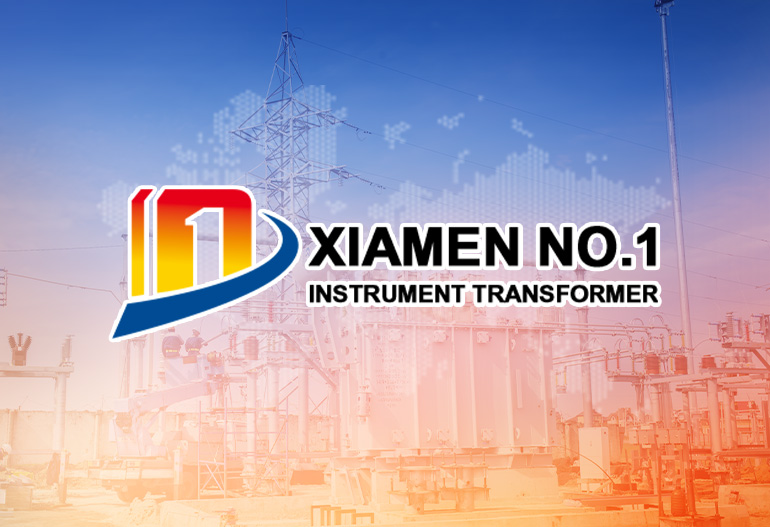
News
Potential Transformers in Commercial Building Electrical Systems
What is a Potential Transformer?
Core Components of a Potential Transformer
Primary Winding: A few hundred to several thousand turns of insulated wire, connected in parallel with the high-voltage circuit (e.g., the main busbar of a commercial building’s electrical panel). It is designed to handle the full line voltage.
Secondary Winding: Fewer turns of finer insulated wire, delivering the stepped-down voltage (110V/120V) to connected devices such as voltmeters, energy meters, protective relays, or control systems.
Magnetic Core: Made of high-permeability materials (e.g., silicon steel laminations) to minimize eddy current and hysteresis losses, ensuring efficient voltage transformation and accuracy.
Insulation: Heavy-duty insulation (e.g., oil-impregnated paper, epoxy resin) to withstand high voltages between the primary and secondary windings, as well as between windings and the core.
Working Principle: Voltage Transformation via Electromagnetic Induction
- Primary Voltage Application: The high voltage (V₁) from the commercial building’s electrical system is applied across the primary winding, creating an alternating magnetic flux (Φ) in the core.
- Flux Linkage: The alternating flux links with both the primary and secondary windings. According to Faraday’s Law, an electromotive force (EMF) is induced in each winding proportional to the number of turns and the rate of change of the magnetic flux.
- Secondary Voltage Generation: The induced EMF in the secondary winding produces a low voltage (V₂) that is a precise fraction of the primary voltage. For an ideal PT (no losses), the voltage ratio is directly proportional to the turns ratio:
V₁ / V₂ = N₁ / N₂
where N₁ = number of primary turns, N₂ = number of secondary turns.For example, a PT with a 480:120 ratio means 480V in the primary induces 120V in the secondary (N₁/N₂ = 480/120 = 4).
Key Characteristics for Commercial Building Applications
- Accuracy Class: Commercial systems require PTs with tight accuracy (e.g., Class 0.5 or 1.0) to ensure precise metering (for billing) and control. Accuracy is defined as the maximum allowable error in voltage transformation under rated conditions.
- Burden Rating: The total impedance of the secondary circuit (including wiring, meters, relays) must not exceed the PT’s rated burden (measured in volt-amperes, VA). Exceeding the burden degrades accuracy.
- Isolation Rating: PTs must provide robust isolation (e.g., 10kV or higher impulse withstand voltage) to protect low-voltage equipment (e.g., PLCs, meters) from high-voltage faults in the primary circuit.
- Overvoltage Capability: They must withstand temporary overvoltages (e.g., due to switching surges) without damage, ensuring reliability in dynamic commercial environments.
- Phase Angle Error: Minimal phase shift between primary and secondary voltages is critical for power quality monitoring and protective relays that rely on voltage phase information (e.g., directional overcurrent relays).
Types of Potential Transformers Used in Commercial Buildings
- Dry-Type PTs: Encapsulated in epoxy resin or polymer, these are compact, maintenance-free, and suitable for indoor use (e.g., electrical closets, switchgear rooms). They are common in low-to-medium voltage commercial systems (480V to 15kV).
- Oil-Immersed PTs: Used for higher voltages (e.g., 20kV and above) or harsh environments. The oil provides insulation and cooling, but they require periodic maintenance (e.g., oil testing) and are bulkier than dry-type units.
- Bushing-Type PTs: Integrated into high-voltage bushings (insulators) of switchgear or transformers, saving space in compact commercial electrical rooms. They are ideal for retrofits where space is limited.
- Protection-Grade PTs: Designed to maintain accuracy during fault conditions (e.g., voltage dips or surges) to ensure protective relays operate correctly. They are paired with measurement-grade PTs in critical systems (e.g., data centers).
Applications in Commercial Building Electrical Systems
- Voltage Measurement and Metering:
They supply low-voltage signals to voltmeters, power quality analyzers, and energy meters, enabling facility managers to monitor line voltages, phase balances, and energy consumption (critical for billing and load management).
Example: A 480V commercial building’s main switchboard uses a PT to step down voltage to 120V, feeding an energy meter that tracks total electricity usage for utility billing.
- Protective Relaying:
An overvoltage relay connected to a PT can trip a breaker if voltage exceeds safe limits (e.g., 520V in a 480V system), preventing damage to equipment like HVAC systems or elevators.
A phase-failure relay uses PT signals to detect missing phases, shutting down motors to avoid burnout.
PTs provide voltage signals to protective relays (e.g., overvoltage, undervoltage, or phase-failure relays) that trigger circuit breakers during faults. For instance:
- Control Systems:
They power low-voltage control circuits for equipment like variable frequency drives (VFDs), motor starters, and building management systems (BMS). For example, a PT supplies 120V to a BMS sensor that adjusts lighting or HVAC based on voltage fluctuations.
- Synchronization:
In buildings with backup generators, PTs help synchronize the generator’s output voltage with the main grid before parallel operation, ensuring a smooth transfer during power outages.
Safety Considerations in Commercial Installations
- Never Short-Circuit the Secondary: Unlike CTs (which must never be open-circuited), PTs must never have a short-circuited secondary. A short circuit causes excessive current in the secondary winding, leading to overheating and damage. Secondary circuits often include fuses or circuit breakers for protection.
- Proper Grounding: The secondary winding and core must be grounded to prevent dangerous voltage buildup due to insulation failure, protecting personnel and equipment.
- Rating Matching: PTs must be rated for the building’s nominal voltage (e.g., 480V primary) and compatible with the secondary devices (e.g., 120V meters). Mismatched ratings cause inaccuracies or failures.
Why PTs are Indispensable in Commercial Buildings
Safe measurement of high voltages without exposing personnel or sensitive equipment to danger.
Accurate energy metering for cost tracking and billing.
Reliable protection against voltage-related faults, minimizing downtime and equipment damage.
Efficient integration with smart building systems for automation and energy optimization.
Summary

XUJIA
I graduated from the University of Electronic Science and Technology, majoring in electric power engineering, proficient in high-voltage and low-voltage power transmission and transformation, smart grid and new energy grid-connected technology applications. With twenty years of experience in the electric power industry, I have rich experience in electric power design and construction inspection, and welcome technical discussions.

